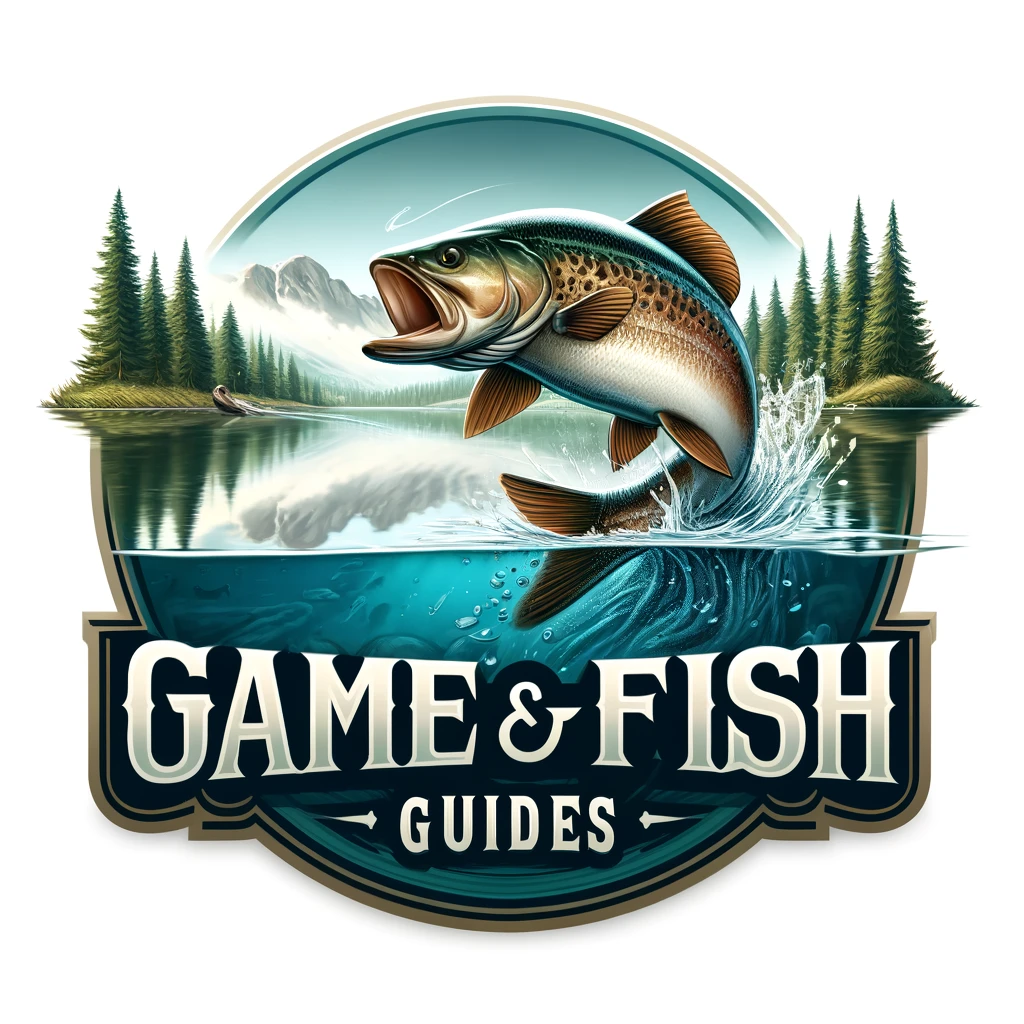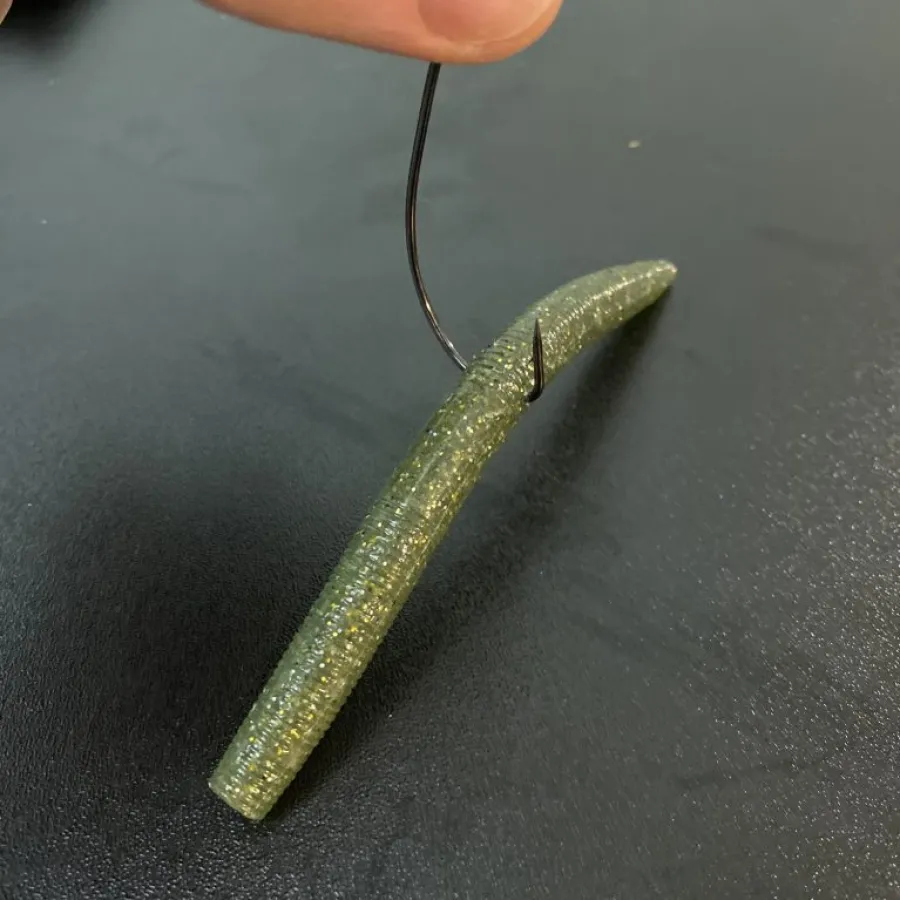Wacky rigging is not only effective, but it’s also extremely simple. This article will explain and show the when, where, and how of fishing a wacky rig. By the end of this article, all of your questions will be answered!
What is a Wacky Rig?
This setup is a simple but highly effective fishing setup that is common for bass fishing. It comes down to hooking a soft plastic worm in the middle, which creates a balanced dangle symmetrically on both sides. Doing this makes the worm appear to almost swim through the water, mimicking the natural presentation of an aquatic organism. My hunch is that it has the appearance of a frog kicking its legs while swimming, which gets the attention of the bass.
Because of its ease of use and effectiveness, this rig is a common setup for both beginners and experienced anglers.
When to use a Wacky Rig
While it’s usually a viable option in general, there are certain situations where it’s more effective.
Clear Water Conditions:
The natural and subtle presentation is especially effective in clear water because fish, particularly bass, will have high visibility which means they are more likely to get spooked by colorful and aggressive baits. With a naturally colored Senko, you will have a slow natural looking bait that won’t be too intrusive or aggressive.
Finicky Bass:
When bass are less active or overly cautious, the slow and natural movement of this rig will be enticing to them. For example, wintertime is a good time to try this rig, along with Ned Rigs.
Shallow to Medium Water Depths:
While it can be adjusted for deeper water, which we will talk about later in the article, an unweighted rig is great for shallow to medium water.
Post-Spawn Period:
Bass are often more lethargic right after spawning, so the subtleness of this rig is a great option. Not only that, but bass are usually held in the shallow water still, which as we discussed before, this rig is great for.
Best Wacky Rig Hooks
Selecting the right hooks is the first important step in fishing wacky style. There are three main options:
- Wide Gap Hooks: These hooks are designed to fit the size of the worm without ruining the natural movement. The wide gap will produce better hookups because there is enough space for the worm to move out of the way.
- Finesse Hooks: Finesse hooks are great for a more natural presentation. They are less likely to weigh the worm down and ruin the optimal movement.
- Weedless Hooks: For fishing in areas with heavy cover or vegetation, weedless hooks are perfect. They prevent snags while still providing decent hookup abilities.
The Best Rod For Wacky Rigs
The rod you choose can play an important role in your success with this rig:
Rod Action:
A fast or extra-fast action rod is best for this rig. You want a good amount of action from the tip to work the rig, and the ability to have a strong hookset.
Rod Length:
I would use a rod length between 6’6” and 7’6”. This range is pretty typical for many bass fishing applications. I usually go with a 7-foot rod for finesse rigs such as this one.
Material and Power:
I would recommend a medium-light to medium power rod. You don’t need a heavy rod with too much of a backbone for lighter fishing styles like this. As far as material goes, this is where it really comes down to preference. Some people prefer graphite, while others prefer composite. Personally, I don’t think it makes that much of a difference in this scenario.
How to fish a wacky rig
There are two styles of this rig, weighted and unweighted. There are also two ways to rig this up, hooking directly through the worm and using an O-ring. We will go over all of these below.
O-ring Method
Instead of directly hooking the worm, you can use an O-ring tool to install an O-ring around the worm, and then hooking under this. The advantage of this method is that you do not damage your worm.
Mastering the Weighted Wacky Rig
Weighted wacky rigs are perfect for fishing deeper water. The only difference between this type of rig is obviously weight. This is simply added by using a jighead hook. When we say weighted wacky rig, this is not to be confused with the Neko Rig.
The Unweighted Approach
The unweighted method is a classic way to fish:
- Simple Setup: Hook the worm in the middle without weight.
- Technique Tips: Cast, let it sink, and give it some rod tip lifts and twitches before letting it fall back down, repeat. Fishing weighted follows the same technique, it simply has a faster, more dramatic fall.
Conclusion
A wacky rig adds a simple, yet effective bass fishing technique to your list of skills. Experiment a little bit and find your personal sweet spot. With these tips, you’re ready to hit the water with your new rig!

